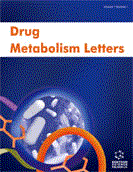
Abstract
Objective: This study describes the in vivo pharmacokinetics and metabolism of [14C]labeled XQ-1H in male rats.
Methods: XQ-1H is a methanesulfonate of XQ, 10-O-(N,N-dimethylaminoethyl)-ginkgolide B, a derivative of ginkgolide B (GB) with enhanced water solubility. Since it is very difficult to synthesize radiolabeled GB, the results obtained in this study may provide helpful insight to further ADME investigation of GB and its analogue compounds. After an i.v. administration of [14C]XQ-1H to male rats, XQ (the freebase form of XQ-1H) was extensively hydrolyzed, moderately metabolized, and mainly excreted in feces (71.5% of the dose) via the biliary route. Results: The main enzyme mediated metabolic pathways were mono- and di-demthylation. Using the radiolabel form of XQ-1H, the temporal binding of XQ to red blood cells was observed. Conclusion: Binding of XQ to RBCs may lower the blood’s viscosity and thus provide symptomatic improvement of ischemic stroke patients.Keywords: [14C]XQ-1H, ginkgolide B derivative, high resolution LC-MS, ischemic stroke, mass balance, metabolism, PAF antagonist, radiolabeling technology.
Graphical Abstract
Article Metrics
 52
52










